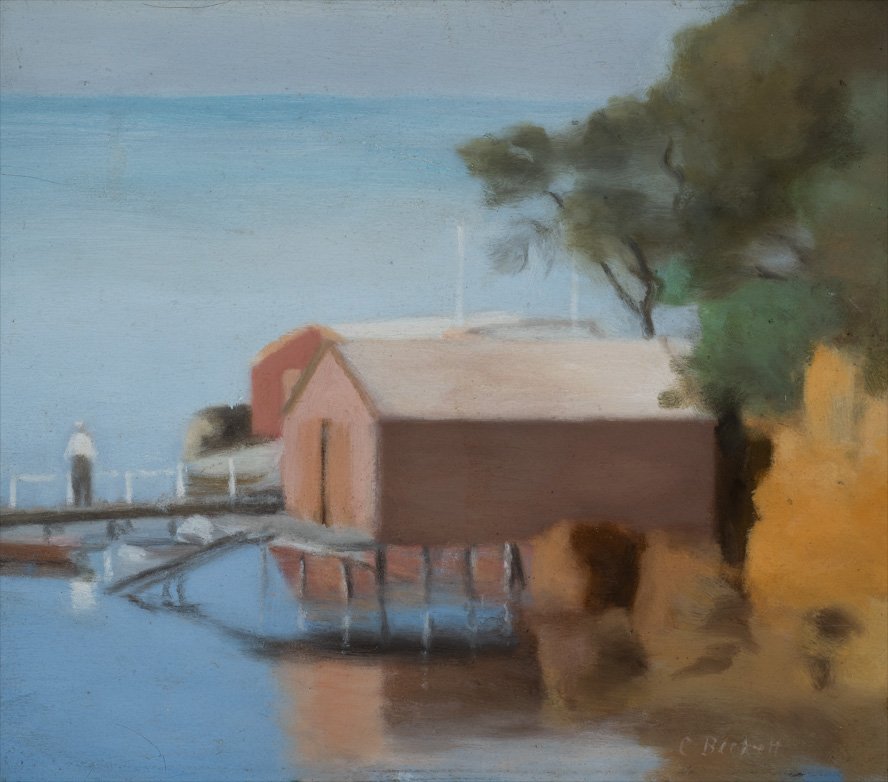Boatshed, Beaumaris
Clarice Beckett
Boatshed, Beaumaris c. 1928
oil on cardboard
Castlemaine Art Museum Maud Rowe Bequest, 1937
Image courtesy of Castlemaine Art Museum
While we perceive colour through light reflected from the object we are observing, the entrancing optical effects of ‘reflections’ were often a feature of Beckett’s compositions. Boatshed, Beaumaris is an image of clarity and quietude. Reflected in the calm waters of Port Phillip Bay, the boatshed’s solidity dissolves in a shimmering, fugitive mirror image.
Similarly, in the adjacent Wet sand, Anglesea—painted during an artists’ summer camp in the coastal town west of Geelong—the receding surf creates a watery mirror reflecting Anglesea’s landmark red sandstone cliffs and a solitary walker on a warm summer day. It is a daringly radical landscape composition in which Beckett’s contemplative lone figure holds the picture in its clever balance of realism and abstraction.


